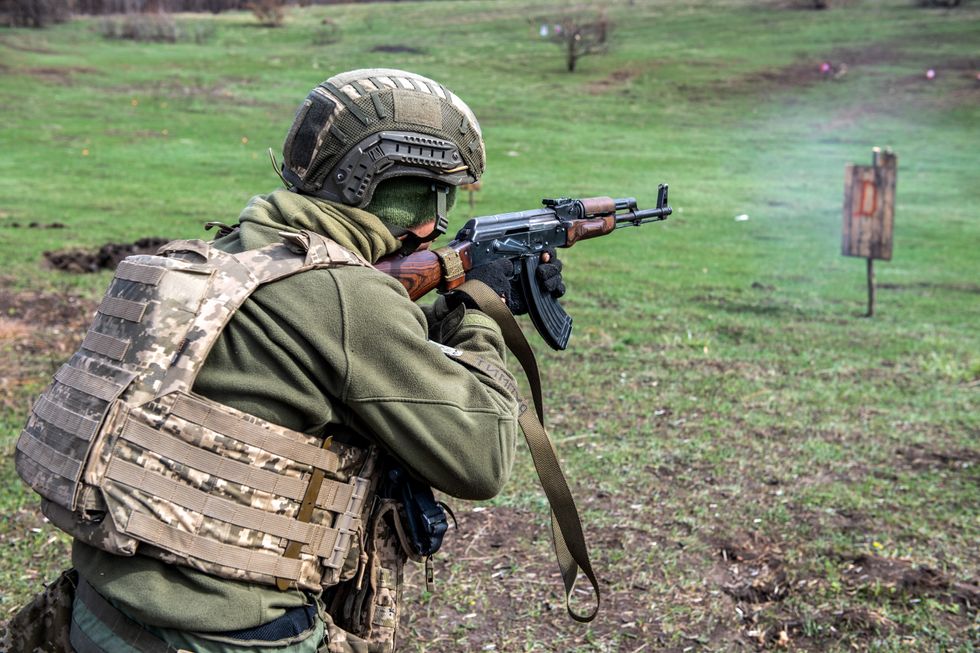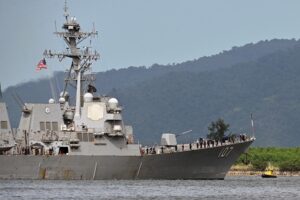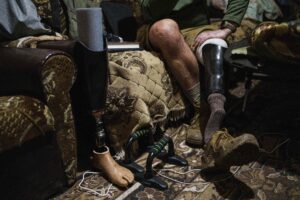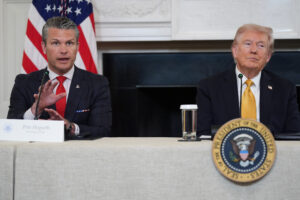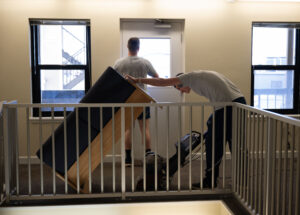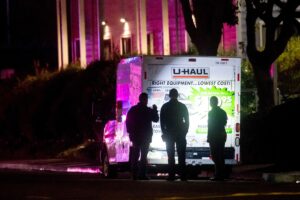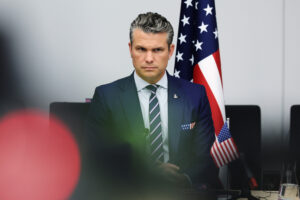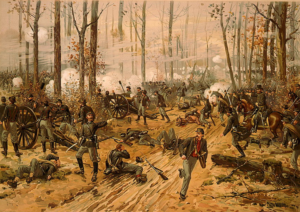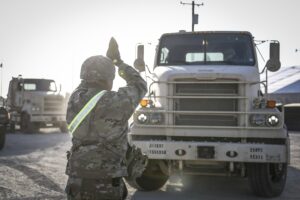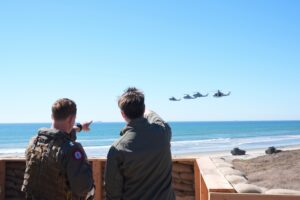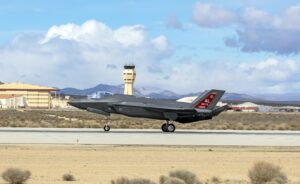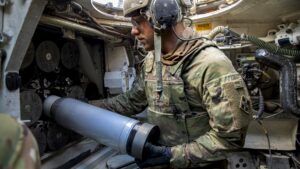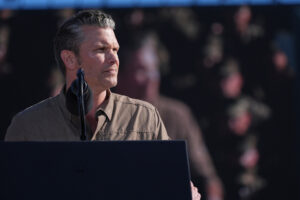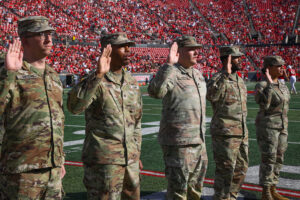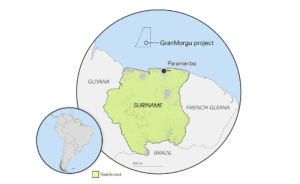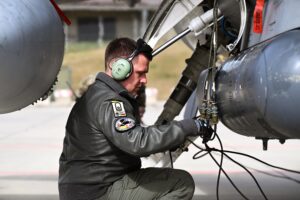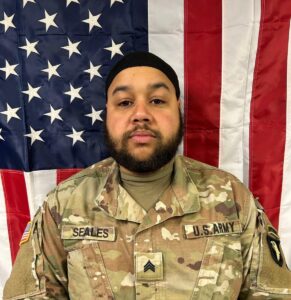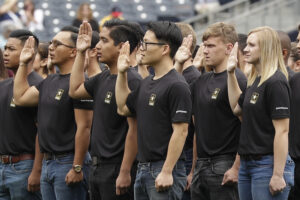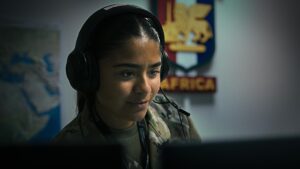
KRAMATORSK – Mykyta’s clearest memory of the Ukraine war is the attack that killed one of his closest friends, Vania Petrenko. The two had lived side by side for months, until the assault brigade Vania commanded came under Russian artillery fire in Toresk, in the Donetsk region. At the time, Mykyta was stationed in Klishchiivka, about 14 miles north. When he got word of his friend’s death, he couldn’t leave his post to say goodbye.
For the latest news & views from every corner of the world, Worldcrunch Today is the only truly international newsletter. Sign up here.
They had been together the day they left the factory where they worked in Dnipro and went to sign up for the draft. The Russian invasion had begun a few days earlier, and Mykyta and Vania had no doubts: They would leave the factory for the front lines.
Training later took them in different directions. Mykyta spent a year and a half with infantry and mechanized units before arriving at the 93rd Brigade.
“We both immediately understood the war wasn’t going to end quickly. So when they told us there was a transfer, I chose to join the 93rd because they were stationed near where I grew up.”
That meant Donbas. Mykyta’s family is from there. For them, the war started in 2014 — when Moscow-backed separatists seized several towns and have been fighting Ukrainian forces ever since. And like thousands of others, his family had to abandon their home and evacuate.
Today, Mykyta commands the FPV drone unit in the 93rd Brigade and, in rotation, trains prisoners released from Ukrainian prisons to fight at the front. It’s a sign of the extreme challenges Ukraine is facing in the war against Russia — most notably in filling the ranks of the military forces.
Dangerously short on personnel
Three years have passed since the queues at the draft office that took Mykyta and Vania to war. These days, the very subject of conscription has become taboo. In December, when asked to account for losses over the past three years, Ukrainian President Volodymyr Zelensky gave a figure of 43,000 soldiers killed and 370,000 wounded.
But analysts estimate that at least 70,000 soldiers have been killed, with around 30,000 still missing. Zelensky went public with those numbers only after U.S. President Donald Trump made the inflated claim that Ukraine had lost “a ridiculous 400,000 soldiers.”
Voluntary enlistment is still strong in Ukraine, but it is no longer enough.
Trump’s numbers are wildly off the mark, but one thing is certain: Most Ukrainian men now have some kind of personal experience with war. Some are no longer afraid of it. Others are terrified. For some, it’s a duty. For others, it shattered their illusions.
Whatever the reason for the current recruitment crisis, the army is running dangerously short on personnel. Last summer, the government first issued a decree, then passed a law allowing prisoners to apply for early release in exchange for military service. The law excludes those convicted of serious crimes. Rapists, murderers, and those found guilty of crimes against national security are not eligible.
The government resisted the move for a long time. But eventually, the losses and lack of manpower became too severe to ignore. Under the new law, sentences are canceled after a year of service, and prisoners remain in combat as long as needed. If they desert, they face five to 10 more years in prison, on top of their original sentence. So far, about 7,000 former inmates have been freed under this program — an approach not unlike that used by the Russian armynot unlike that used by the Russian army.

Training prisoners
Russia began recruiting prisoners in 2022 and has since sent 100,000 former inmates to the front. Many initially joined Wagner Group — whose leader Yevgeny Prigozhin was declared dead last year in a plane crash following his failed uprising against former Defense Minister Sergei Shoigu. Many of the Russian convicts were sent as cannon fodder. Thousands died in the battle for Bakhmut. They were treated like numbers, shipped straight to the assault brigades, ready to be replaced by the next wave. These men were sent on the most dangerous missions to protect others.
In Ukraine, comparisons with the Russian method have been quick to draw criticism. Ukrainian unit commanders and even Defense Minister Denis Maliunska have moved swiftly to explain how their approach differs.
“Of course, there’s a comparison to be made. But we’re talking about completely different methods. In our case, the prisoners are trained, and their lives are valued the same as everyone else’s,” Maliunska said.
According to the Ministry of Defense, voluntary enlistment is still strong in Ukraine, but it is no longer enough to keep up with Russia’s demographic edge and ruthless recruitment tactics. Russia’s population is three and a half times that of Ukraine, and it fields around 1.5 million active-duty soldiers, compared to Ukraine’s 900,000 (depending on the estimate).
Worldcrunch 🗞 Extra!
Know more • In a move to replenish its aging military, Ukrainian President Volodymyr Zelensky signed a law in April 2024 lowering the conscription age from 27 to 25. In 2024, Ukraine’s average soldier was around 40, with many over 45 — a stark contrast to wars of the past, where young men were sent to fight. In Britain, during World War I, conscripts were typically under 27, and most deaths occurred among 19-year-olds. Ukraine, by contrast, has relied heavily on older men, operating under the unspoken logic that it is less tragic to lose someone who has already lived half a life.
The draft system has been accused of exploiting this demographic, with many medically unfit men deemed “limitedly fit.” Ukraine faces a grim reality: its declining birthrate, aging population and high depopulation make it unlike any nation that has fought a major war. Even with reduced draft age, the pool of eligible young people is very small. Soldiers and commanders agree the front needs people in their prime. But after more than 120,000 casualties, and with hundreds of thousands of young Ukrainians having fled the country, options are limited. — Gabriele Magro, Worldcrunch (read more about the Worldcrunch method here)
The Alcatraz Unit
A month and a half ago, 40 former prisoners arrived in the 93rd Brigade base. They were taken from the penal colony and brought to a military training camp.
Now, between Druzhkivka and Kramatorsk, they are learning to fire weapons and operate drones. Soldiers of the 93rd have dubbed them “the Alcatraz Unit.” Most of the new arrivals seem energized by army life. Not just because volunteering got them out of prison, but because, as they put it, they now feel “useful to the country.”
That’s the most common refrain among the still loosely organized ranks of these new recruits. Their faces are hardened by years behind bars, rough and weathered. Some keep to themselves, hesitant with weapons. When instructors explain that they must learn to assemble and disassemble their rifles blindfolded, mechanically, they stare blankly, as if the weapons were alien. The toughness prison gave them quickly turns into fear.
All they want is to get stronger so they can hit us harder.
It is probably the same fear felt by so many others who, since the full-scale invasion began, rushed to the front to defend the country’s borders, only to find themselves in a brutal war they had previously only seen in films.
The prisoners are taught to handle automatic rifles and machine guns. They learn how to recognize mines and booby traps, and how to set them. They take turns firing, two at a time. The silhouette is a few dozen meters away. The instructor has them shoot standing, then kneeling, then prone and then from behind trees.

What future?
Soon enough, they will have to hide behind trees for real. A drone buzzes overhead. Soldiers from the 93rd order the new recruits to scatter, crouch and find cover. Russian strikes have hit training camps before. The former inmates-turned-soldiers put their new skills to the test, crawling between trees. When the drone disappears, they return to the shooting line in pairs and resume firing at the silhouette targets.
When he hears politicians talking in clichés or making hollow promises, Mykyta often changes the station or turns off the TV. “Those of us fighting the war understand what’s going on,” he says. “And I’ll just say this: our enemy is an old one, and it has betrayed its promises time and again. They’re just buying time, regrouping.”
If he were face-to-face with a negotiator, he would say this: if Ukrainians make a promise, they keep it. “But sadly, you can’t reach any sort of deal with an enemy that keeps breaking its word. All they want is to get stronger so they can hit us harder.”
He has no vision of the future. But he knows one thing for certain: “If Russia gets what it wants — and right now, it is getting it — then every soldier still alive in Ukraine will have to flee. Not just them, but their families, their extended families, their grandparents. Because for us, that would be a death sentence.”

